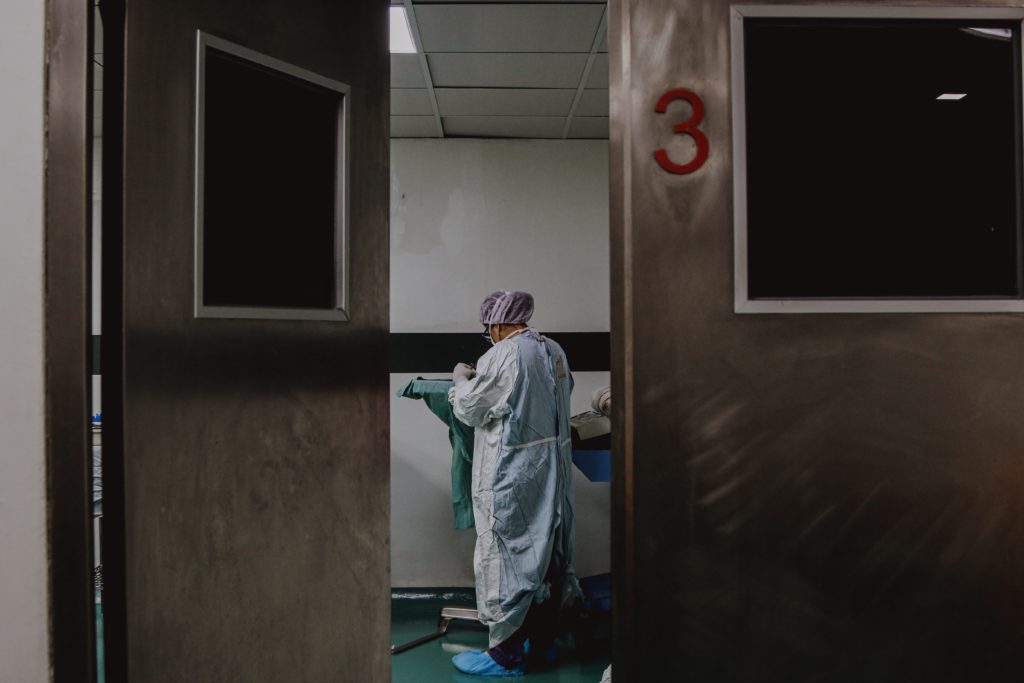
Stock Photo | Image Source: SJ Objio on Unsplash
CEBU CITY, Philippines – Central Visayas experienced the “second wave” of COVID-19 cases, during the first few months of 2021. At that time, everyone was enjoying the most relaxed form of community quarantine status – Modified General Community Quarantine (MGCQ).
Both health authorities and local officials were confident in responding to the increase of infections, a spillover from the parties and gatherings during the Holiday season that preceded.
However, when the “third wave” came in the middle of the year, the region’s healthcare system, particularly in Cebu, buckled as the rapid transmission of the virus resulted in more infections, more patients seeking hospital care, and unfortunately, more deaths.
Hospitals were overwhelmed with patients waiting for admission along the streets. Medical-grade oxygen cylinders were selling fast, and Cebu City government officials started looking for more burial spaces as bodies of confirmed and suspected COVID-19 patients pile up.
These were just some of the proofs of how deadly the dreaded Delta variant is.
In this two-part special feature, we will look back on the recent wave of infections that hit Cebu island, and how Cebuanos are now gradually recovering and learning from its “worst surge yet.”
The Delta Variant
Last July 29, the Department of Health (DOH) reported the first batch of confirmed cases of the Delta variant in Central Visayas, and all of these came from Cebu island. These individuals are also without travel history outside the country.
When the state’s health department made the announcement, COVID-dedicated beds in some of the largest hospitals here were almost full. Isolation facilities were reactivated to ease congestion.
By August 1, the three independent cities of Cebu – Cebu, Lapu-Lapu, and Mandaue – were also reverted to a stricter Modified Enhanced Community Quarantine (MECQ). Cebu province was placed under “GCQ with heightened restrictions” with the exception of 12 localities that shifted to MECQ.
These were made in an effort to curb the spread of the infections.
B.1.167.2 is the scientific tag of the Delta variant of SARS-CoV-2, the virus that causes COVID-19. It first emerged in India last December and gripped the south Asian nation.
COVID-19’s Delta variant is described as highly transmissible and more than two times as contagious as previous variants, according to the Centers for Control Disease and Prevention (CDC) of the United States government.
The World Health Organization (WHO), in addition, recently confirmed that the mutation is the dominant strain in the Philippines and community transmission is evident.
But by the time they made the announcement, the Central Visayas office of DOH (DOH-7) had long suspected that the Delta variant was responsible for the latest COVID-19 surge in Cebu.
READ: Local Delta cases in Region 7 reach 83 as WHO confirms community transmission
24k New Cases in 1 Month
When August came, the entire island of Cebu had consistently recorded triple-digits in the number of new COVID-19 cases per day, the bulk of which came from the province and the capital, Cebu City.
From August 1 to August 31, data from DOH-7 compiled by CDN Digital showed that Cebu island recorded a total of 24,856 additional cases of COVID-19. This despite being reverted to stricter quarantine classifications and mobility, once again, was limited.
READ: Duque: ‘No improvement’ despite prolonged ECQ in Regions 7, 10
In comparison, since the early stages of the pandemic in 2020, the island-province only managed to breach the 24,000-mark in total confirmed cases sometime in January this year, or after 11 months since the first case was detected here.
New cases outweighed the recoveries during this period as it only amounted to a total of 18,719. Even more, DOH-7’s records showed that a total of 1,140 mortalities related to the infection were reported in Cebu in the same period.
From figures to scenarios on the ground
Beyond the figures, the situation here took a morbid and grim turn, with experts from the national scene describing the outbreak as “Cebu’s worst surge yet.”
It began with ambulances lining up outside Cebu City’s largest hospitals, an indication that these are reaching overwhelming levels. Some officials blamed the lack of manpower in COVID-dedicated treatment facilities for this.
READ: Hospital occupancy on the rise but officials say ‘outbreak still manageable’
No sooner, customers were seen crowding the pharmacies and stores selling medical equipment as medical-grade oxygen, used to aid patients confirmed or suspected to have the infection, became a hot commodity. Fortunately, its supply remained stable despite an increase in demand.
READ: No hoarding of medical oxygen seen in Cebu
Then, there was the issue on the handling of cadavers. Even funeral parlors here were overwhelmed as bereaved families try to book cremation machines.
In Cebu City, at least two funeral homes can do cremation, the standard process for patients who succumbed to COVID-19.
The Roman Catholic church here also extended help to the city government after they approved the latter’s request to open more burial spaces in Catholic cemeteries.
READ: Archdiocese of Cebu approves giving tomb space to Cebu City
As of August 31, DOH-7 has detected a total of 83 Delta variants on confirmed COVID-19 cases in Central Visayas, most coming from Cebu. Of this number, two were fatalities. / dcb
(To be continued)